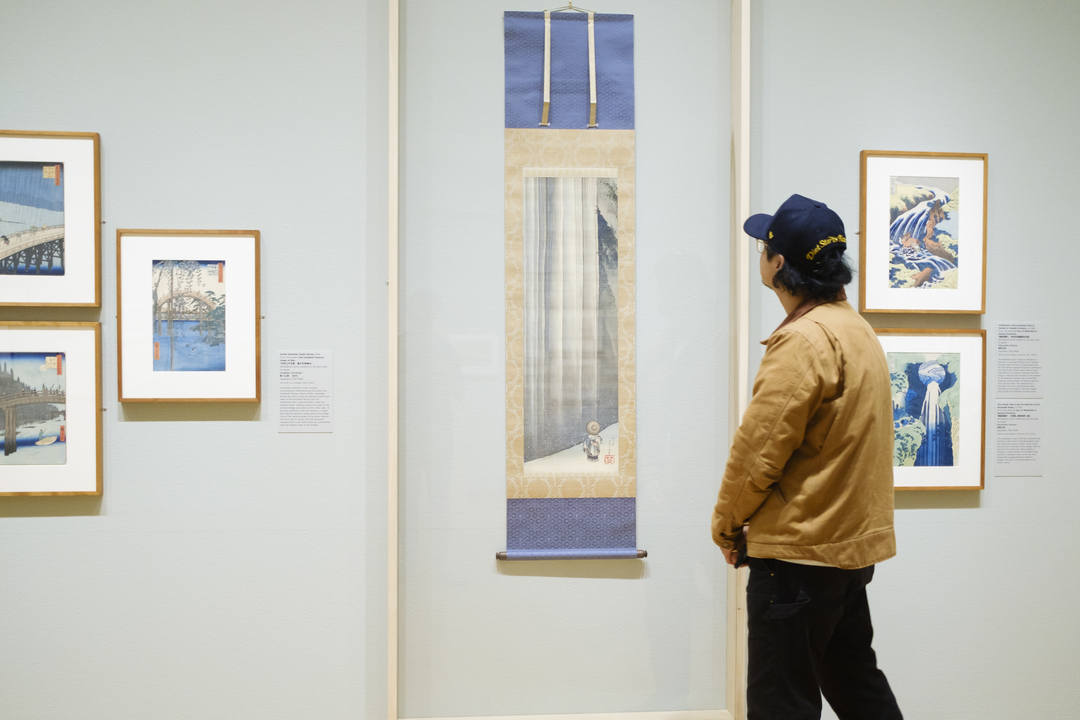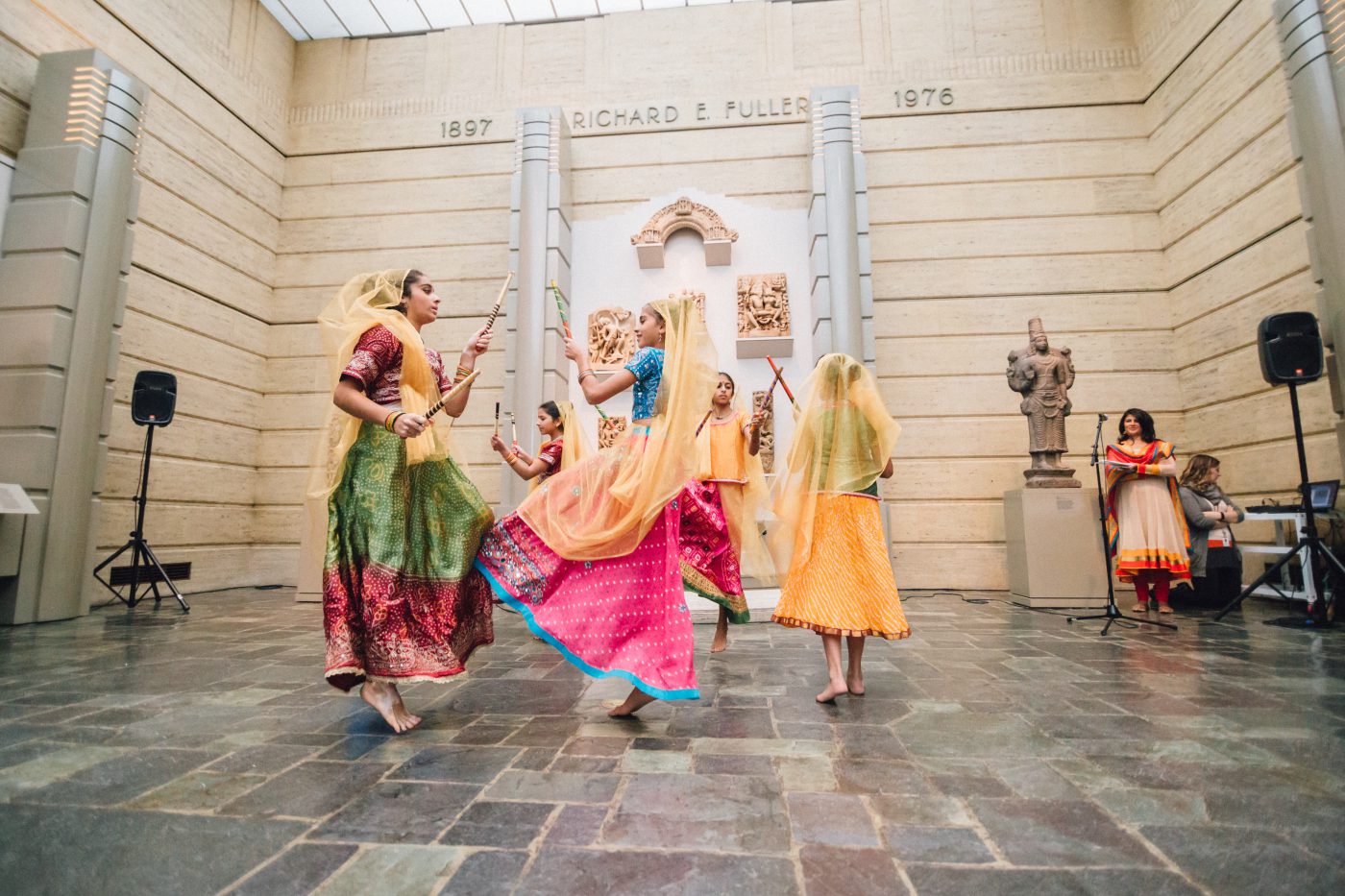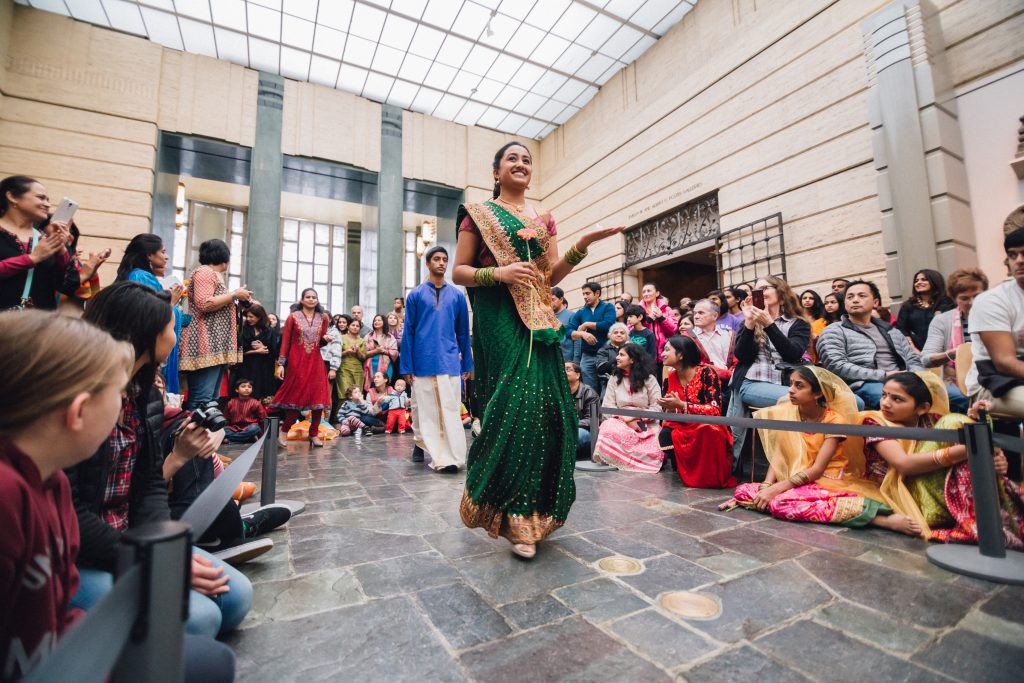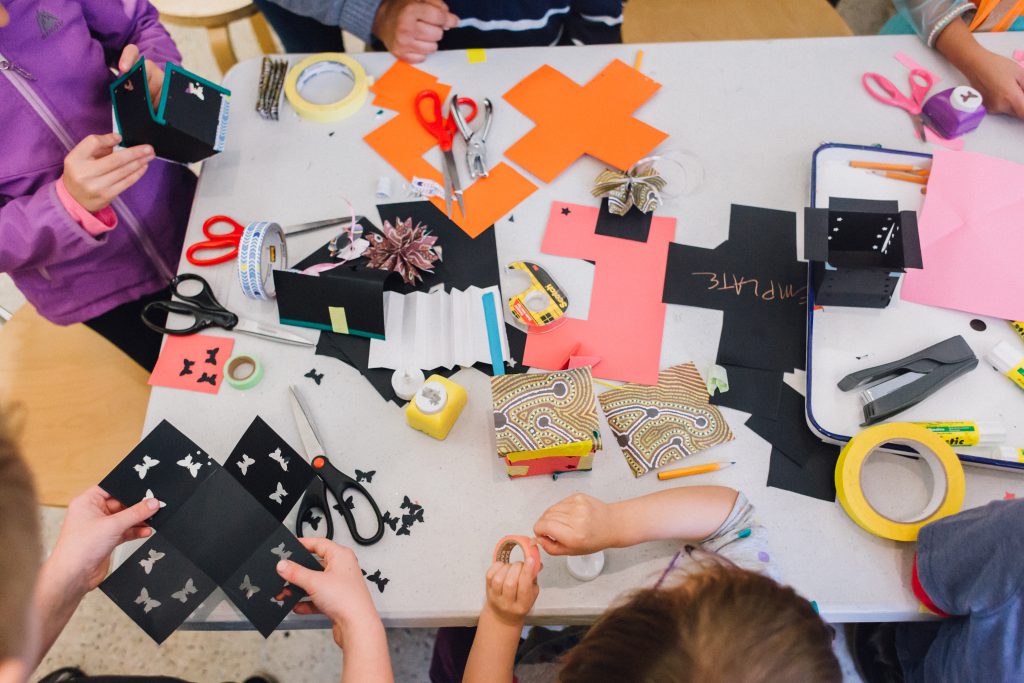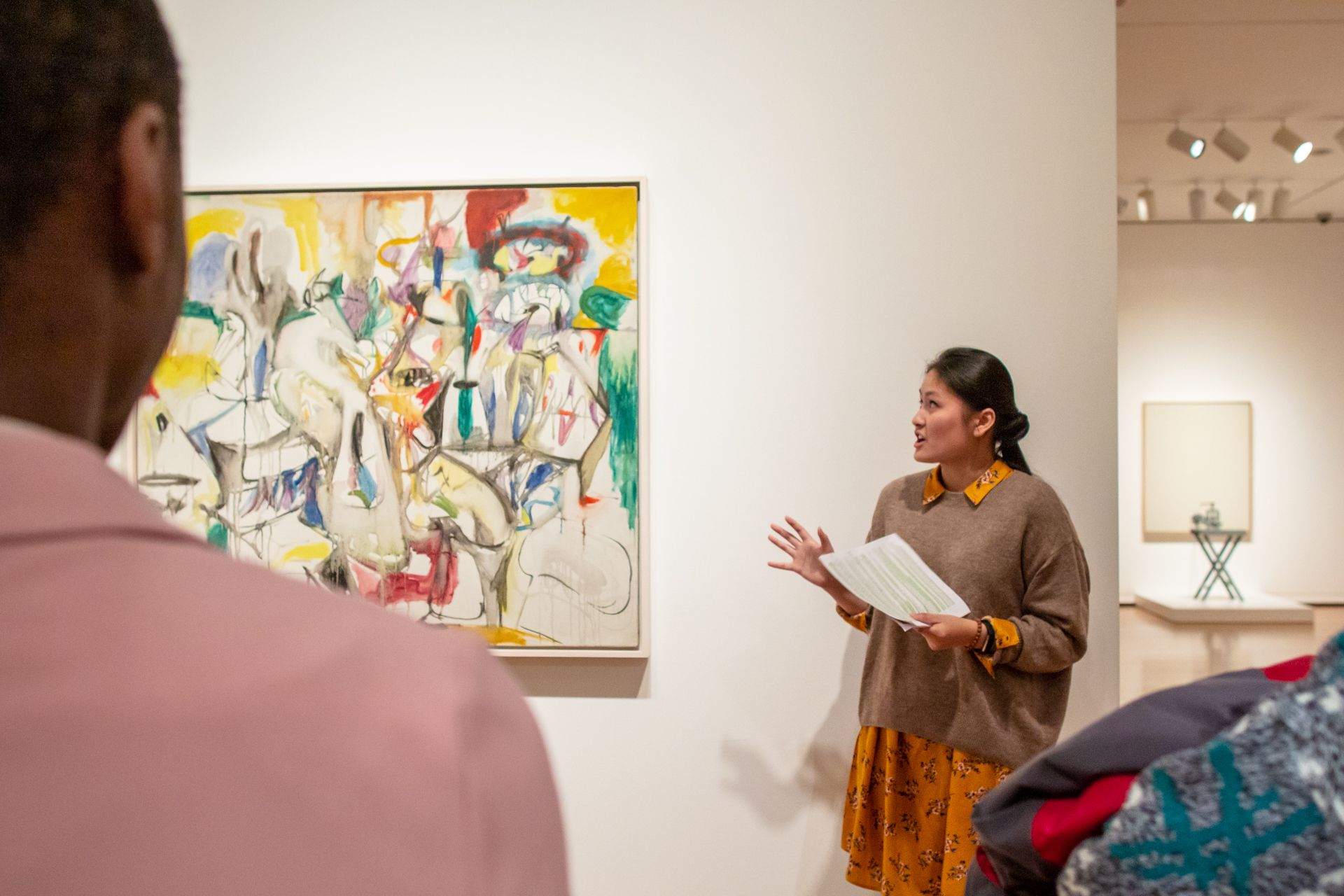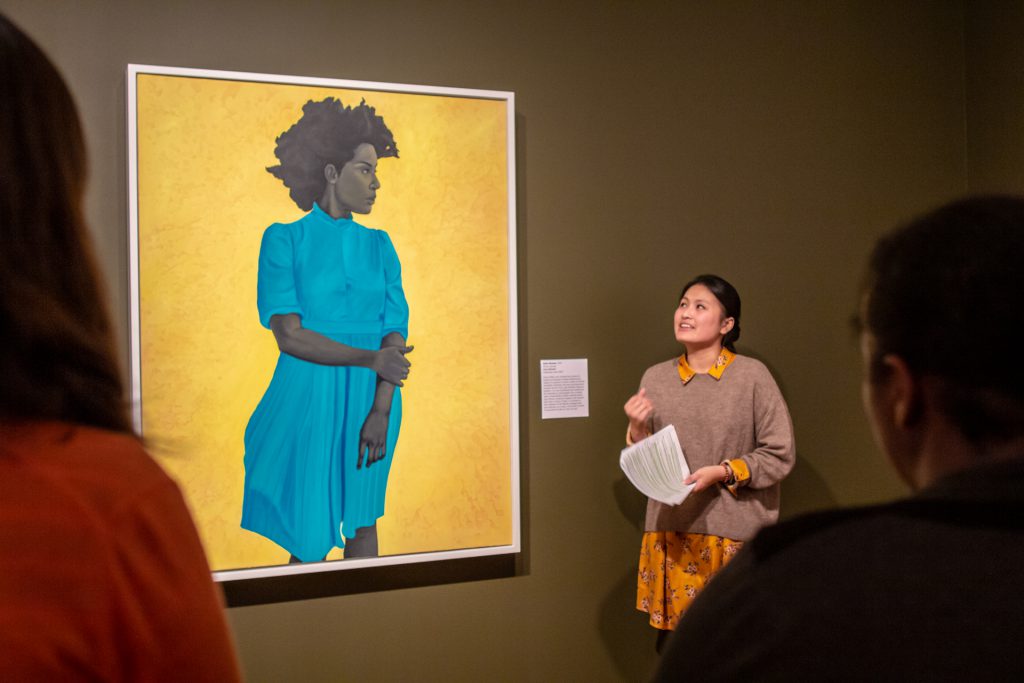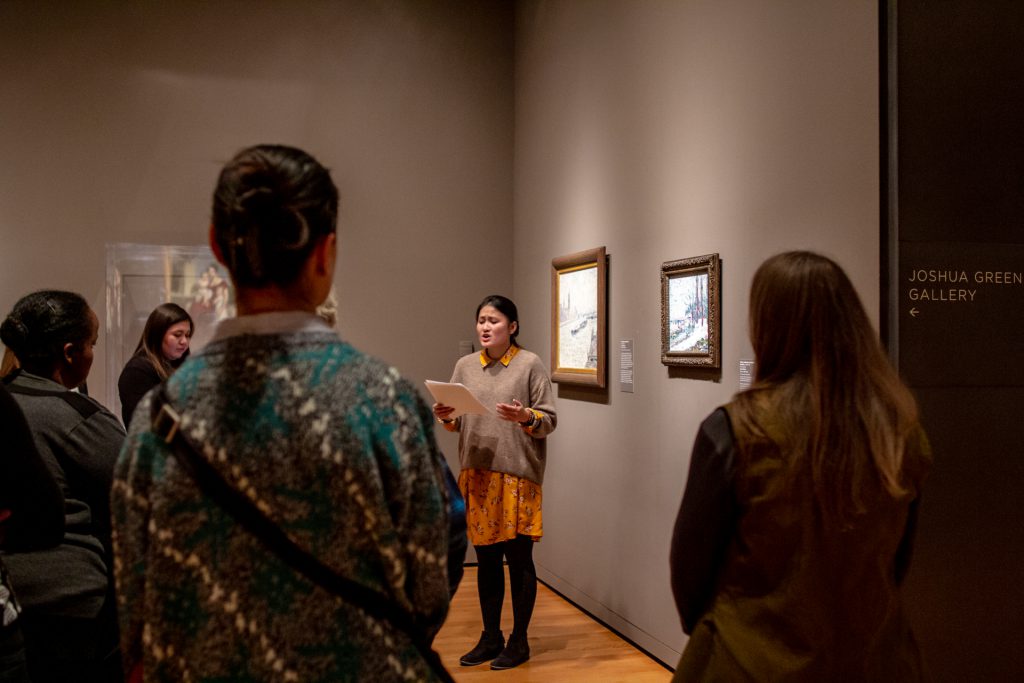Muse/News: Hokusai’s Fame, Culture Streetcars, and Caravaggio’s Cardsharps
SAM News
José Carlos Diaz, SAM Susan Brotman Deputy Director for Art, was interviewed for KING5’s Evening Magazine about Hokusai: Inspiration and Influence, from the Collection of the Museum of Fine Arts, Boston, which is now on view at SAM.
“Hokusai’s probably an artist you’ve always known. You know him for the Great Wave, but he’s also one of the most famous artists of all time.This exhibition has almost 300 works that represent the artists Katsushika Hokusai, but also his peers, his pupils, his rivals, and also the influence he had on Europe as well as contemporary culture today.”
On Saturday, the Seattle Asian Art Museum hosted the Diwali Family Festival. KING5 News’ Angeli Kakade previewed the event on Friday’s broadcast, and Nicole Henao, SAM Manager of Teen & Family Programs, appeared on the Saturday morning news to share all the details (did you catch it?).
Jas Keimig for South Seattle Emerald with recommendations for arts events in November, including Legendary Children on November 17 at the Olympic Sculpture Park. This celebration of queer and trans BIPOC communities is produced with many partners.
Local News
“At this Green Lake dive bar, karaoke is a cathartic, unifying experience”: Nathalie Graham for the Seattle Times with a moving read.
Crosscut’s Brangien Davis gets you ready for the Big Dark in her latest ArtSEA post, including an update on the just-christened SIFF Cinema Downtown’s opening date.
Joshua McNichols and Mike Davis on the proposal for a streetcar line through downtown Seattle that would connect cultural institutions.
“Putting the streetcar line at the center of this arts renaissance is not just a gimmick. It turns out there’s a strong correlation between the presence of the arts downtown and transportation, whether it’s streetcars or single occupancy vehicles.”
Inter/National News
Claire Selvin for ARTnews on the Whitney Museum of American Art’s new show on Ruth Asawa that focuses on her works on paper.
“Collectors Marilyn and Larry Fields make ‘landmark gift’ of 79 works to MCA Chicago”: Ruth Loepz for The Art Newspaper reports on a gift of art “predominantly by woman-identifying and BIPOC artists.”
“There’s Much More to Caravaggio’s ‘The Cardsharps’ Than Vice”: Katie White of Artnet takes another look at the masterpiece, now on view in Chicago.
“The painting is mischievous, the older conman’s face comical in expression, and we feel ourselves rooting, with a bit of a smile, for the bad guys.”
And Finally
Let’s dive into the Calder Foundation archives: “Works of Calder, 1950 by Herbert Matter.”
– Rachel Eggers, SAM Associate Director of Public Relations
Photo: Alborz Kamalizad.
